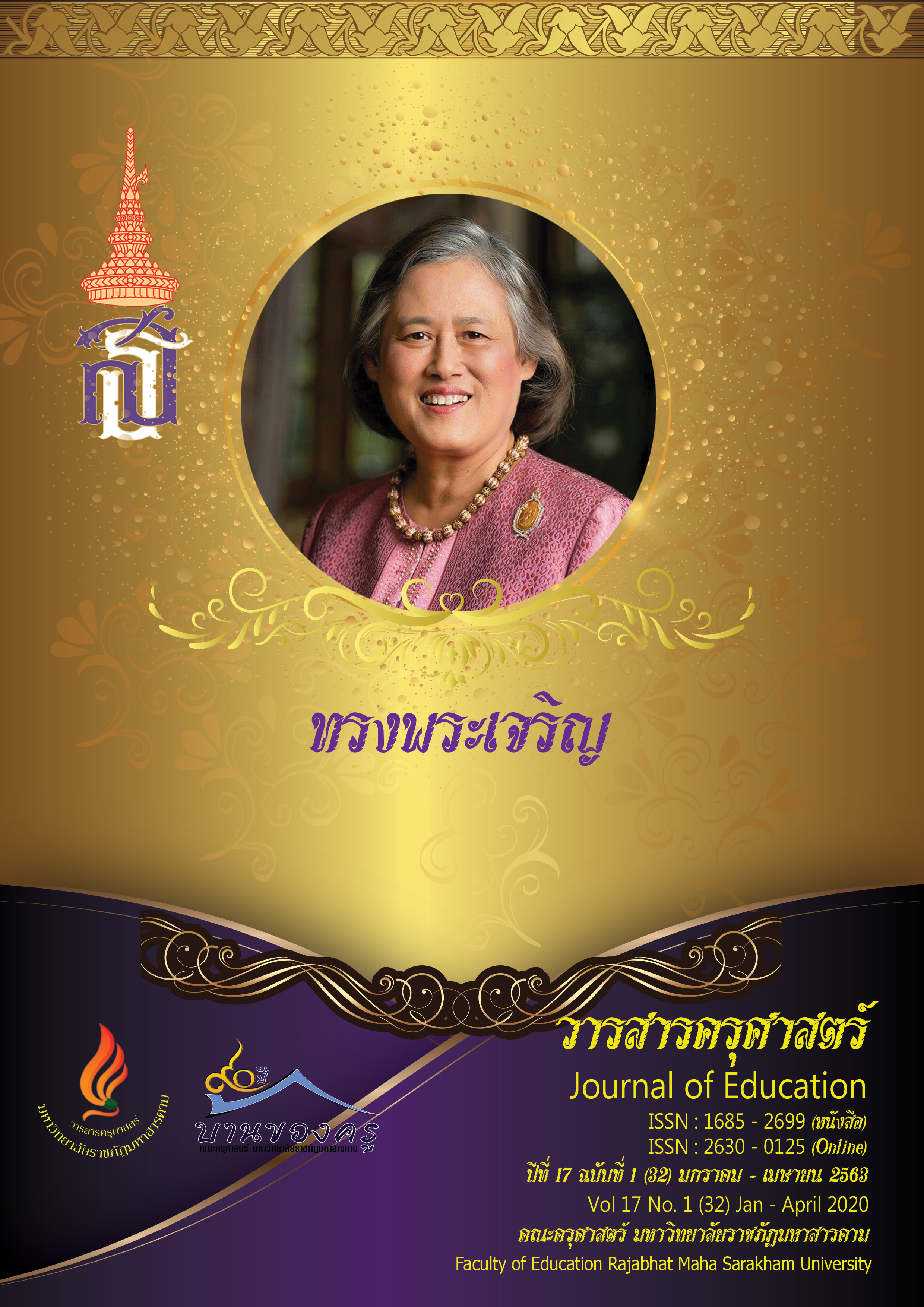A Study and Development of Software Prototype of the Further Study Recommendation in 21st Century Relying Individuals Skills Based on Multiple Intelligence Theory for 12th Graders
Main Article Content
Abstract
The purposes of this research were: 1. Synthesized a model of recommended further study
in the 21st century system according to multiple intelligence theory, and 2) assess the suitability of
the model. The research was divided into 2 phases as follows: 1. Synthetizing the model by
in-depth interviews 11 experts in charge of academic administration and curriculum in 11 Rajabhat
universities within the northeast area using a purposive sampling technique. 2) Assessing the
appropriateness of the model, the target was 5 experts using a purposive sampling technique.
The data were collected using the assessment of the appropriateness of the model and analyzed
using mean ( ) and standard deviation (S.D.).
The result revealed that the model to recommend further study in the 21st century based
on multiple intelligence theory or MICC Model has consisted of 3 elements: 1) Multiple Intelligent
(MI), 2) core subjects in 21st century (C), and 3) curriculum guidance (C). The average of all 3 aspects
was at the most appropriate level ( = 4.59, S.D. = 0.65). It can be concluded that the MICC
model as a guidance tool to recommended further study in the 21st century by using a person’s
strength based on multiple intelligence theory.
Article Details
ข้อกำหนดเบื้องต้นที่ผู้นิพนธ์(ผู้ส่งบทความ) ควรทราบ
1. ผู้นิพนธ์ที่ประสงค์จะลงตีพิมพ์บทความกับวารสาร ตั้งแต่เดือนมกราคม 2563 เป็นต้นไป ให้ใช้รูปแบบใหม่ (Template 2563) โดยสามารถดูตัวอย่างได้ที่เมนู GUIDELINES
2. จะตีพิมพ์และเผยแพร่ได้ ต้องผ่านการประเมินจากผู้ทรงคุณวุฒิ (Peer Review)
3. การประเมินบทความโดยผู้ทรงคุณวุฒิ (Peer Review) เป็นแบบ Double Blind
4. การอ้างอิงบทความใช้หลักเกณฑ์ APA (American Psychological Association) คลิก
5. บทความถูกปฏิเสธการตีพิมพ์ ไม่ผ่านการประเมิน ผู้นิพนธ์ขอยกเลิกเองหรือชำระเงินก่อนได้รับการอนุมัติ ทางวารสารไม่มีนโยบายการคืนเงิน
References
วิจารณ์ พานิช. (2555). วิถีสร้างการเรียนรู้เพื่อศิษย์ในศตวรรษที่ 21. กรุงเทพมหานคร: มูลนิธิสดศรี-สฤษดิ์วงศ์ฝ่ายโรงพิมพ์ บริษัท ตถาตา ทับลิเคชั่น จำกัด.
Bonk, C. J., and Graham, C. R. (2005). Handbook of blended learning: Global perspectives local designs. Pfeiffer Publishing: San Francisco, CA.
Corbet, E. (2009). Assessment and the multiple intelligences. Dissertation Abstracts International,36(4), 1883–1998.
Fisher, E. M. (1998). Across case survey of research based on Howard Gardner’s theory of multiple intlligences. Dissertation Abstracts International, 58(11), 4171-A.
Gardner, H. (1983). Frames of mind: The theory of multiple intelligence. L.: Heinemann.
. (1993). Multiple intelligences. New York: BasicBooks.
Sumalee, S. (2010). Research report of the development of educational management model/approach to increase educational opportunities for 15-59 year olds children outside the school system [1st ed]. Bangkok: Prigwhan Graphic.


